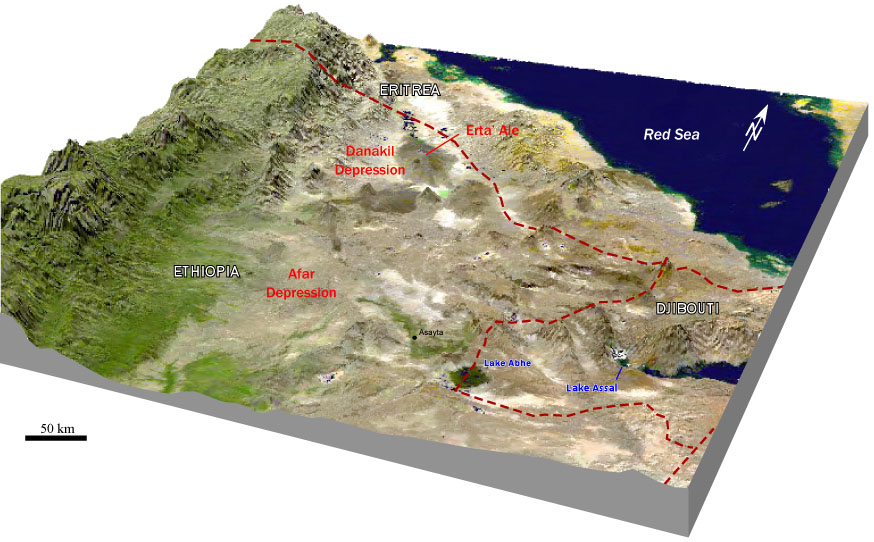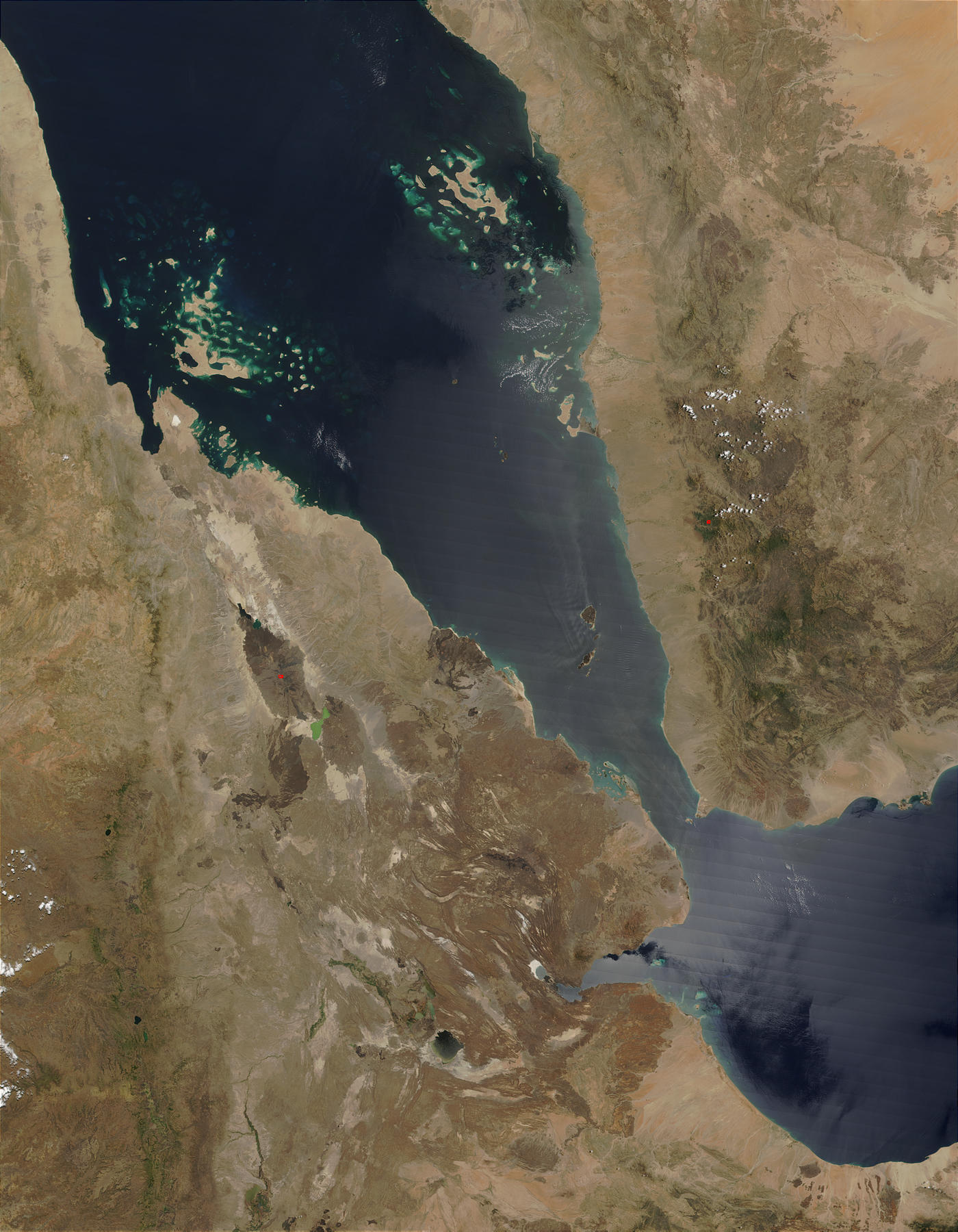Africa is splitting apart at the seams or, to be geographically correct, along the East African Rift in the Afar Depression region of northeastern Ethiopia. The process has been going on for millions of years, and the region, parts of which are already below sea level, will be submerged by Red Sea floods and become a new ocean in another few million years. But what makes the Afar Depression cataclysm special is the fact that it is happening in one of only two places on Earth where a mid-ocean ridge can be studied on land, the other one being Iceland.
The other thing that is special about the Afar Depression is that, in 2005, a 35 mile long rift up to 25 feet wide suddenly split open the desert ground in the region over a period of just 10 days. “At the time, some geologists believed the rift was the beginning of a new ocean as two parts of the African continent pulled apart, but the claim was controversial. Now, scientists from several countries have confirmed that the volcanic processes at work beneath the Ethiopian rift are nearly identical to those at the bottom of the world’s oceans, and the rift is indeed likely the beginning of a new sea. The study, published in the October 2009 issue of Geophysical Research Letters, suggests that the highly active volcanic boundaries along the edges of tectonic ocean plates may suddenly break apart in large sections, instead of little by little as has been predominantly believed. In addition, such sudden large-scale events on land pose a much more serious hazard to populations living near the rift than would several smaller events, says Cindy Ebinger, professor of earth and environmental sciences at the University of Rochester and co-author of the study” (source).
“This work is a breakthrough in our understanding of continental rifting leading to the creation of new ocean basins,” says Ken Macdonald, professor emeritus in the Department of Earth Science at the University of California, Santa Barbara, and who is not affiliated with the research. “For the first time they demonstrate that activity on one rift segment can trigger a major episode of magma injection and associated deformation on a neighboring segment. Careful study of the 2005 mega-dike intrusion and its aftermath will continue to provide extraordinary opportunities for learning about continental rifts and mid-ocean ridges” “The whole point of this study is to learn whether what is happening in Ethiopia is like what is happening at the bottom of the ocean where it’s almost impossible for us to go,” says Ebinger. “We knew that if we could establish that, then Ethiopia would essentially be a unique and superb ocean-ridge laboratory for us. Because of the unprecedented cross-border collaboration behind this research, we now know that the answer is yes, it is analogous” (Ibid.).
“Used to understanding changes in the planet on timescales of millions of years, the international team of scientists…have seen amazing changes in Afar in the past five years, where the continent is cracking open, quite literally underneath their feet. Dr James Hammond, a seismologist from the University of Bristol – who has been working in Afar – says that parts of the region are below sea level and the ocean is only cut off by about a 20-metre block of land in Eritrea. “Eventually this will drift apart,” he told the BBC World Service. “The sea will flood in and will start to create this new ocean.” It will pull apart, sink down deeper and deeper and eventually…parts of southern Ethiopia, Somalia will drift off, create a new island, and we’ll have a smaller Africa and a very big island that floats out into the Indian Ocean.” The researchers say that they are extremely lucky to be able to witness the birth of this ocean as the process is normally hidden beneath the seas” (BBC World Service).





